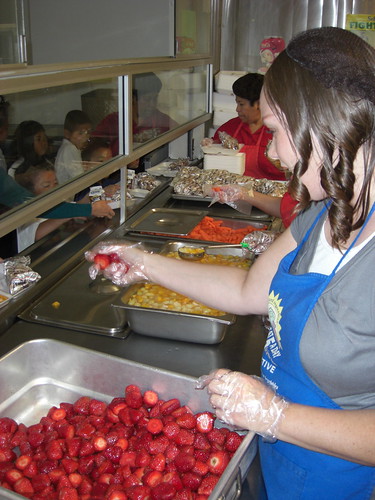This post is part of the Science Tuesday feature series on the USDA blog. Check back each week as we showcase stories and news from the USDA’s rich science and research portfolio.By Jennifer Sowerwine, University of California – BerkeleyMy mouth begins to water just thinking about all the delicious fruits and vegetables I will enjoy this coming weekend celebrating the Fourth of July. And we’re lucky here in Northern California to have a wealth of fresh produce grown locally.
Many stores, restaurants and even schools aren’t taking advantage of this local supply. This past spring, with support from the National Institute of Food and Agriculture and in coordination with the University of California Cooperative Extension Service, I started a project to open up new markets for local growers by connecting them with new buyers. In particular, we worked with strawberry growers of Southeast Asian descent in the Sacramento and Fresno regions. This is part of a larger program to increase the economic viability of Southeast Asian farms in California’s Central Valley through on-farm research and training in crop production, pest management, food safety and marketing.
Most of the 95 strawberry farm stands in the Sacramento region are owned by Hmong and Mien refugees from Laos, who turned to farming when they immigrated to the United States after the Vietnam War. They sell most of their product at farm stands, but during peak season demand can’t keep up with production. With limited language skills, most farmers can’t access new markets and leave the fruit to rot in the field.
In partnership with local produce distributor, Produce Express, and several nonprofits including the Community Alliance with Family Farms, the Alchemist Community Development Corporation and Soil Born Farms Urban Agriculture and Education Project, we now bring fresh, local strawberries into children’s school lunches, restaurants and low-income neighborhoods. Some farmers deliver direct to the schools, allowing children to consume berries picked just hours before.
We also want to reduce “food miles” or the distance food must travel from farm to fork. We created a Google map to help residents find their closest farm stand. Sacramento-area residents are able to enjoy fresh strawberries from farms located less than 10 miles from their residences.
This year, twelve local strawberry farmers sold an additional 4,600 cases of berries beyond their own farm stands, earning a combined $58,000. These additional revenues are a welcome relief for these small farmers, who on average gross $15,000 in a good year. These partnerships are a win-win solution for both small farmers and residents, especially low income residents and school children, who have greater access to fresh, nutritious, local food.

Fresh, local strawberries are now available to more than 60,000 school children through a partnership between local growers, the Sacramento School District and the University of California Cooperative Extension Service.






















